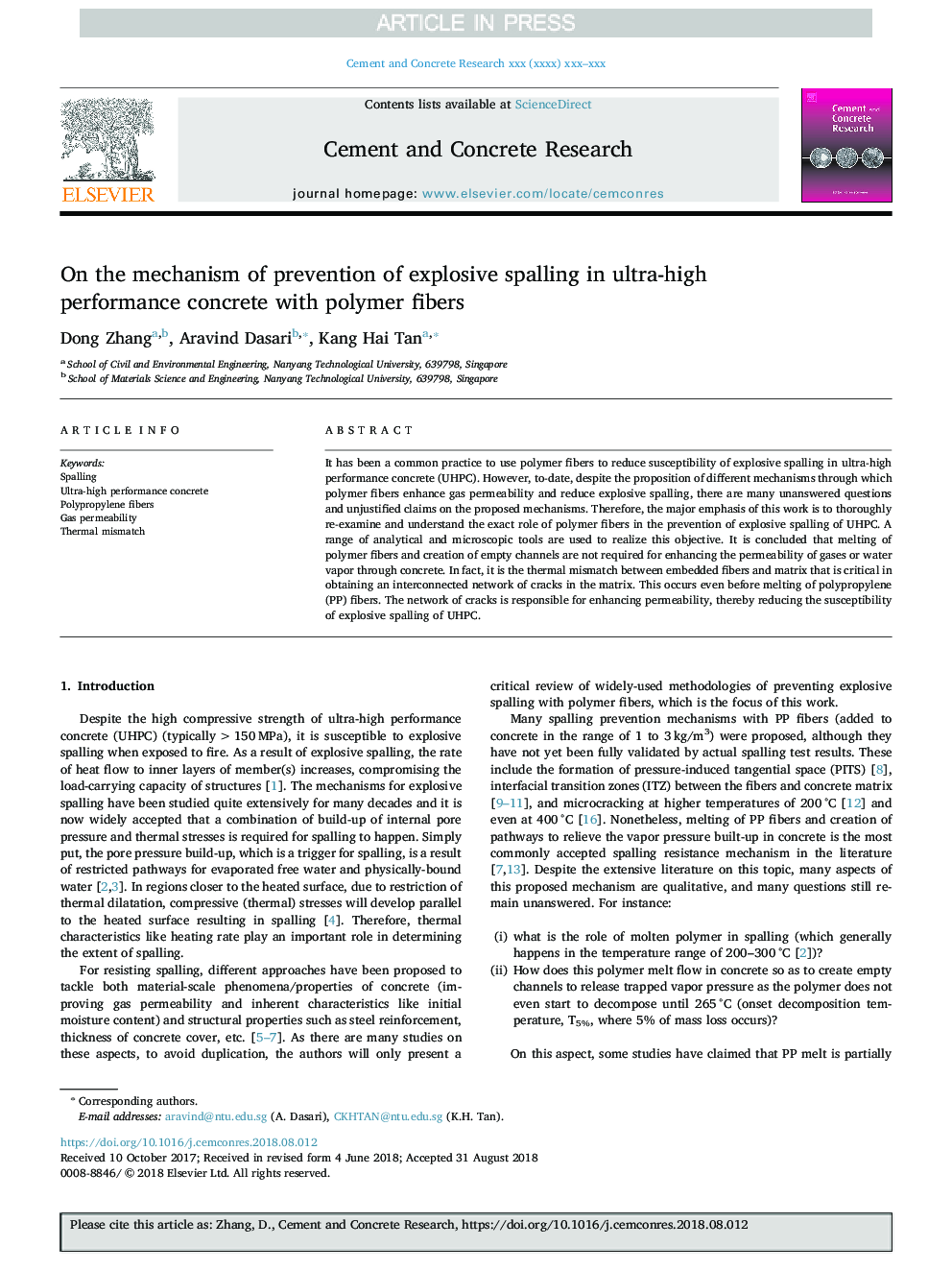| Article ID | Journal | Published Year | Pages | File Type |
|---|---|---|---|---|
| 10155359 | Cement and Concrete Research | 2018 | 9 Pages |
Abstract
It has been a common practice to use polymer fibers to reduce susceptibility of explosive spalling in ultra-high performance concrete (UHPC). However, to-date, despite the proposition of different mechanisms through which polymer fibers enhance gas permeability and reduce explosive spalling, there are many unanswered questions and unjustified claims on the proposed mechanisms. Therefore, the major emphasis of this work is to thoroughly re-examine and understand the exact role of polymer fibers in the prevention of explosive spalling of UHPC. A range of analytical and microscopic tools are used to realize this objective. It is concluded that melting of polymer fibers and creation of empty channels are not required for enhancing the permeability of gases or water vapor through concrete. In fact, it is the thermal mismatch between embedded fibers and matrix that is critical in obtaining an interconnected network of cracks in the matrix. This occurs even before melting of polypropylene (PP) fibers. The network of cracks is responsible for enhancing permeability, thereby reducing the susceptibility of explosive spalling of UHPC.
Keywords
Related Topics
Physical Sciences and Engineering
Engineering
Industrial and Manufacturing Engineering
Authors
Dong Zhang, Aravind Dasari, Kang Hai Tan,
